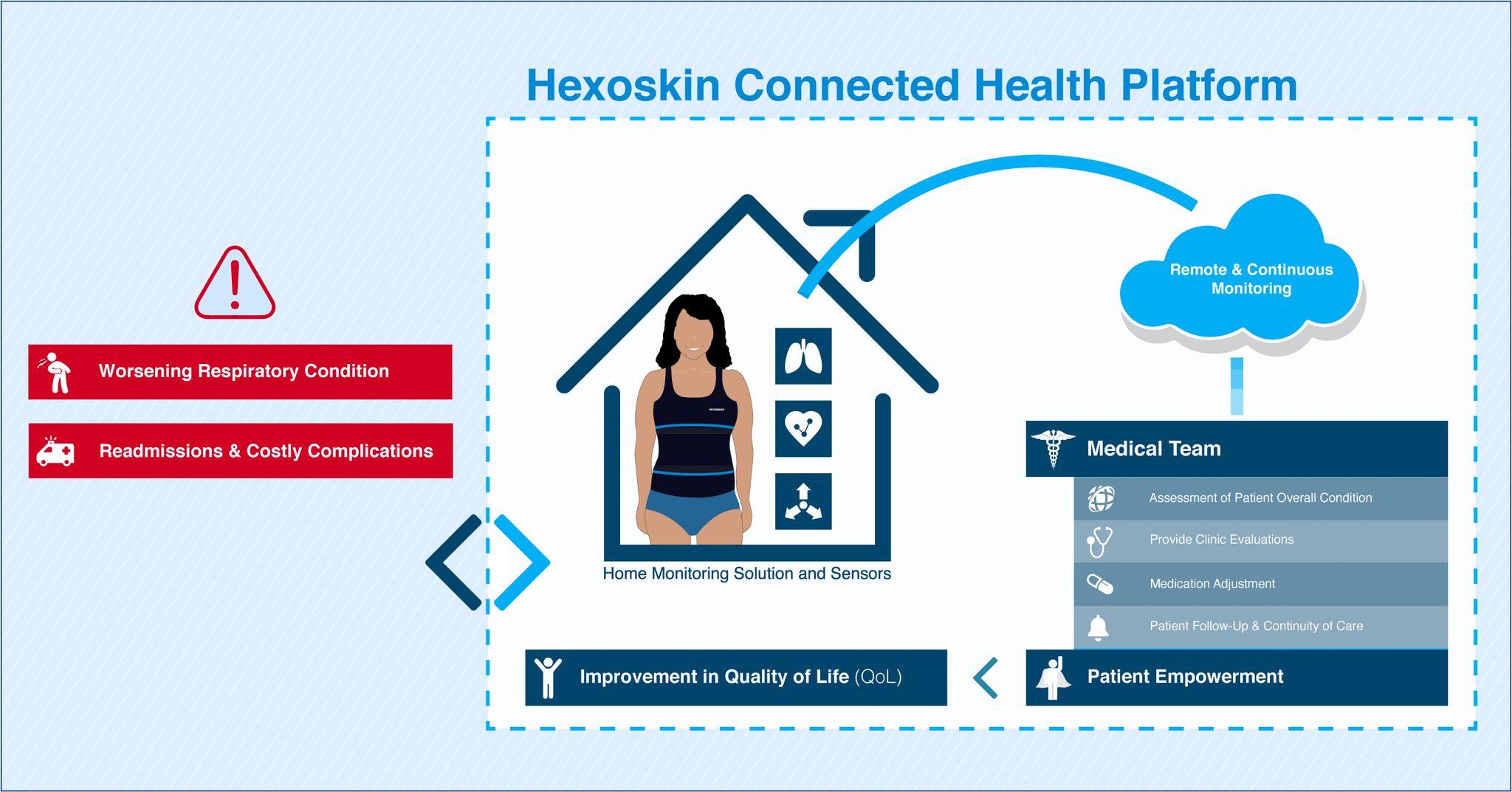- Continue Shopping
- Your Cart is Empty
Continuity of respiratory care during COVID-19 - Continuous Respiratory Monitoring with Hexoskin
June 10, 2020
Patients suffering from lung diseases such as Chronic Obstructive Pulmonary Disease (COPD) are among the most vulnerable to infections, including the Coronavirus disease (SARS-CoV-2). In fact, they are more likely to develop severe disease or to be admitted to intensive care units (ICU) when compared to patients with conditions like high blood pressure or diabetes (Jain et al. 2020). COPD patients also have a 5 fold greater risk of developing complications when contracting SARS-CoV-2 (Lippi et al. 2020). In fact, COPD patients are at risk of developing a more severe form of SARS-CoV-2 leading to serious complications (Attaway et al. 2020). Overall, the care management may turn out to be far more complicated for these patients (Tal-Singer et al. 2020).
The importance of ensuring continuity of care for lung diseases & COPD Patients
The number of COPD patients has been on the rise for several decades already and are projected to keep increasing (Adeloye et al. 2015; GlobalData 2018; Ma et al. 2015). Comorbidities and complications associated with this chronic condition make this the highest financial burden on the healthcare system (Chapman et al. 2006; Ford et al. 2015). In the current COVID-19 context, these costs may increase dramatically.
This alarming rate of COPD patients requiring continuous and expensive medical care is now combined with the pressure faced by Healthcare systems to tackle the COVID-19 pandemic. It has become essential to think of cost-effective tools such as connected health platforms and telemedicine services for assisting and monitoring these patients at home (Tal-Singer et al. 2020). It was even reported that some COPD patients were misdiagnosed for SARS-CoV-2, thus delaying proper care and putting them in a precarious situation (Tal-Singer et al. 2020). Imperative actions must be implemented to closely monitor all COPD patients, ensure the continuity of their care and prevent disease progression, exacerbations and further harm. Acting early and effectively towards this most vulnerable population will be the key to good clinical outcomes and lower medical costs for the healthcare system.
Throughout the COVID-19 pandemic, Hexoskin remains committed to providing complete connected health solutions for remote patient monitoring, thereby promoting efficient and valuable continuity of care. Hexoskin is the only clinically validated garment able to provide continuous vital signs monitoring and has already been widely used in both clinical and scientific research settings (over 85 scientific publications). Integrating new and innovative technologies such as Hexoskin into the basic care of patients with chronic respiratory diseases will ensure an enhanced and continuous assessment of their health condition, and this, at all times.

 Figure 1. Optimizing patient care with continuous monitoring with Hexoskin.
Figure 1. Optimizing patient care with continuous monitoring with Hexoskin.
How to remotely and continuously monitor patients with respiratory diseases & COPD with Hexoskin?
To learn more about how to remotely and continuously monitor patients with respiratory diseases & COPD with Hexoskin, we invite you to download our latest White Paper. In this White Paper, you will learn more about:
- Hexoskin’s unique capabilities to continuously monitor, not only respiratory rate, but the overall respiratory function.
- Easing patient burden and improving their overall experience outcome using the Hexoskin Remote Monitoring Platform
- How Hexoskin telemonitoring solution for COPD patients and other respiratory diseases contribute to Patient empowerment and improvement of Quality of Life.

